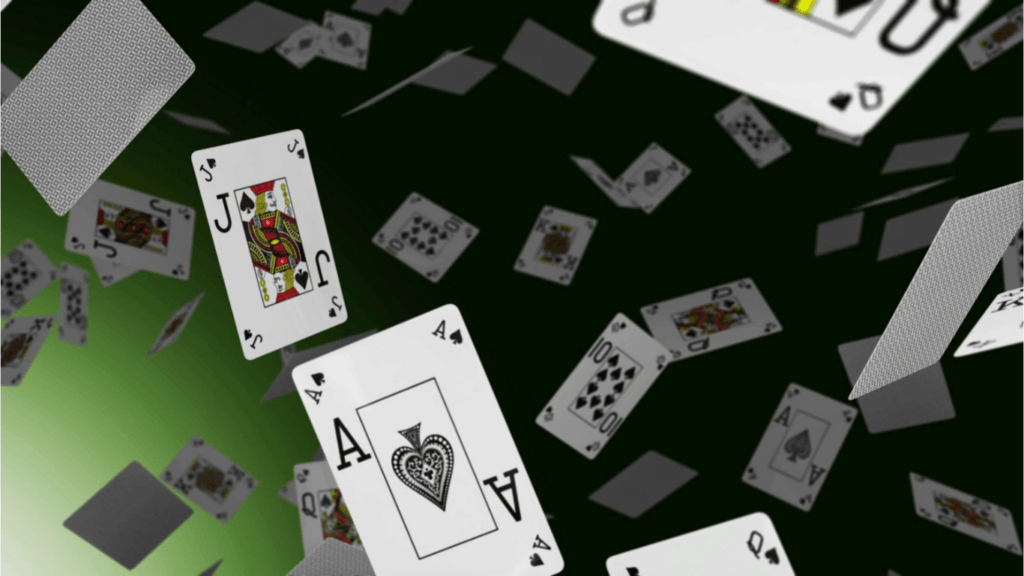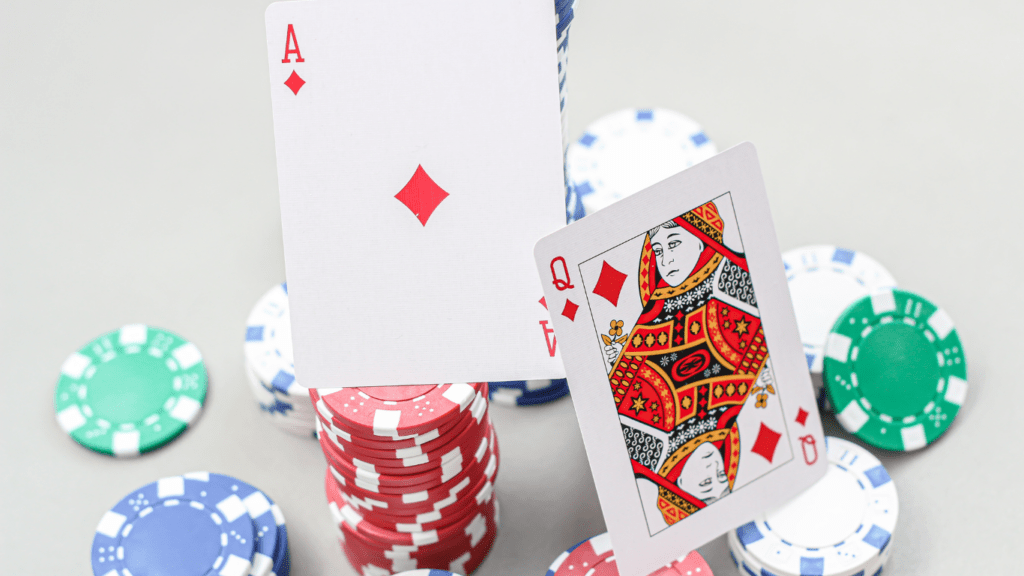Understanding The Basics
Knowing the fundamentals of Blackjack is essential for success. The game has straightforward goals and card values that players must comprehend.
Objective Of The Game
The main objective in Blackjack is to beat the dealer’s hand without exceeding a total of 21. Players win by having a hand value higher than the dealer’s or by the dealer’s hand going over 21 (busting).
The Deck And Card Values
Blackjack uses one or multiple standard 52-card decks. Each card’s value is critical:
- Number cards (2-10) hold face value.
- Face cards (Jack, Queen, King) each count as 10.
- Aces can be valued at 1 or 11, depending on which benefits the hand.
Understanding these basics ensures a foundation to build more advanced strategies.
The Basic Rules Of Blackjack

Blackjack combines simplicity with strategy. Knowing the rules ensures a solid starting point for any player.
Initial Deal
In the initial deal, each player receives two cards. I get two cards, and the dealer does too. One of the dealer’s cards is face-up, while the other is facedown (the hole card). My goal is to beat the dealer’s hand without going over 21.
Player Actions
Players can take different actions:
- Hit: I request another card to increase my hand’s total.
- Stand: I decide not to take more cards, keeping my current total.
- Double Down: I double my bet and receive one more card.
- Split: With two cards of the same value, I split them into separate hands, doubling my bet.
- Surrender: In some games, I can give up half my bet and forfeit my hand.
Understanding these actions helps me navigate the game effectively.
Advanced Strategies
After mastering the basics, players often seek advanced tactics to improve their winning odds and decision-making skills.
Basic Strategy Chart
Utilizing a Basic Strategy Chart can reduce the house edge to a minimal value. This chart provides the best possible action for each hand based on the player’s cards and the dealer’s upcard. For example:
- When to Hit: If holding 12 and the dealer shows a 2 or 3, hitting increases the chance of improving the hand.
- When to Stand: If holding 17 or higher, standing is typically the best choice to avoid busting.
- When to Double Down: If holding a total of 11, doubling down when the dealer shows a lower card maximizes profit potential.
- When to Split: Always split Aces and 8s as these combinations offer chances to convert weak or risky hands into possible winning ones.
- When to Surrender: Surrendering on 16 when the dealer shows a 9, 10, or Ace can be a strategic move to minimize losses.
Card Counting Basics
Card counting involves tracking the ratio of high to low cards remaining in the deck to predict outcomes and bet sizes. It doesn’t guarantee winning but gives an edge over the house. Basic understanding includes:
- Assign Values: Low cards (2-6) as +1, high cards (10-Ace) as -1, and neutral cards (7-9) as 0.
- Running Count: Track the cumulative value as each card is dealt. A higher positive count suggests more high-value cards remain.
- True Count: Adjust the running count based on the number of decks remaining. Divide the running count by the estimated number of decks.
- Betting Strategy: Increase bets when the true count indicates a higher chance of landing a blackjack or favorable hands. Conversely, decrease bets when the count is negative or neutral.
These advanced strategies, when practiced diligently, can significantly enhance the overall gaming experience and increase the likelihood of walking away a winner.
Common Mistakes To Avoid
Knowing common mistakes can improve your Blackjack game and increase your odds. Avoid these pitfalls for better success.
Splitting Tens
Many players make the mistake of splitting tens (pair of 10s or face cards). While it’s tempting, splitting tens often reduces your winning chances. A pair of tens gives you a strong hand totaling 20. Splitting risks two weaker hands, especially if dealer shows a strong upcard (7, 8, 9, 10, or Ace). Stick with a total of 20 for a higher probability of winning.
Betting Too Much
Another common mistake is betting too much per hand, especially when on a losing streak. It’s crucial to manage your bankroll wisely. Betting large amounts to recover losses can deplete your funds quickly. Set a betting limit based on your total bankroll and follow it strictly. Most recommend betting between 1% and 5% of your total bankroll per hand. This strategy minimizes risks and helps you stay in the game longer.
Tips For Success
Blackjack success isn’t only about understanding the rules. Players benefit greatly from strategic practice and diligent bankroll management.
Practice Makes Perfect
Consistent practice fine-tunes your skills, deepening your understanding of strategies. Online simulators offer platforms for this. For example, using a Basic Strategy Chart during simulations ingrains optimal decisions into your gameplay. These charts advise actions based on your hand and the dealer’s upcard. Regular use ensures quick, informed decisions in live games.
Managing Your Bankroll
Effective bankroll management sustains your gameplay and maximizes your chances of winning. Allocate a specific amount for each session, ensuring it aligns with your overall budget. For example, if your total bankroll is $500, consider betting 1-2% per hand, translating to $5-$10. This approach minimizes significant losses from sudden losing streaks. It’s also wise to set win and loss limits. If you reach either limit, walk away to maintain discipline. This strategy helps you enjoy the game longer without risking financial stability.


 Gary Coxtersons brought his technical expertise to the development of Hype Gamble Match, ensuring the platform’s robust functionality and smooth operation. With a deep understanding of web development and platform integration, Gary was pivotal in building the backend systems that allow for real-time updates and a seamless user experience. His contributions have made it possible for users to access the latest betting odds, insights, and strategies effortlessly, supporting the overall success of the platform.
Gary Coxtersons brought his technical expertise to the development of Hype Gamble Match, ensuring the platform’s robust functionality and smooth operation. With a deep understanding of web development and platform integration, Gary was pivotal in building the backend systems that allow for real-time updates and a seamless user experience. His contributions have made it possible for users to access the latest betting odds, insights, and strategies effortlessly, supporting the overall success of the platform.